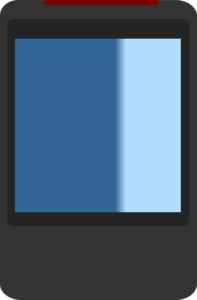
Resistive is one of the world’s leading touchscreen technologies. Like all touchsreen technologies, it supports the use of touch-based commands. You can control resistive touchscreens by tapping the interface with a finger or stylus. Resistive touchscreens will register your touch commands, and they’ll respond to your touch commands.
While there are different types of resistive touchscreens, they all feature two seperate layers. They feature a top layer — the layer that you can see and touch — as well as a bottom layer. Why do resistive touchscreens feature two separate layers exactly?
How Resistive Touchscreens Are Constructed
To better understand why they feature two separate layers, you should familiarize yourself with their construction. Resistive touchscreens have a relatively simple construction consisting of a top layer, a bottom layer and a middle spacer layer. The top and bottom layers feature electrodes on the sides facing each other. The spacer layer is simply an “empty” layer consisting of air.
The Importance of Two Layers
Resistive touchscreens require two layers so that they can detect and respond to touch commands. There are four-wire and five-wire resistive touchscreens, both of which require two layers to function as intended.
Performing a touch command on a resistive touchscreen will press the top layer into the bottom layer. The top and bottom layers are separated by a spacer layer by default. Touch commands, however, will force the top layer into the bottom layer. Upon making contact, the two layers will form a circuit.
Most resistive touchscreens work by applying a voltage to one of the layers. Upon powering up a resistive touchscreen, a voltage will be applied to the bottom layer. The bottom layer, of course, won’t touch the top layer. There’s a spacer layer between the top and bottom layers that prevents them from touching. If you perform a touch command, though, you’ll press the top layer through the spacer layer and into the bottom layer.
Both the top and bottom layers have electrodes on them. By performing a touch command, voltage from the bottom layer will flow to the top layer. This will allow the resistive touchscreen to determine the location of your touch command.
In Conclusion
All resistive touchscreens require two layers so that they can detect and respond to touch commands. Resistive touchscreens aren’t the same as capacitive touchscreens. While capacitive touchscreens can identify touch commands using a single layer, resistive touchscreens can not. Resistive touchscreens need two separate layers to identify touch commands.
